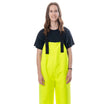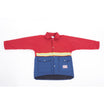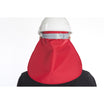Imagine being in a bustling cityscape with the constant blaring of horns, roaring of engines, and the clattering clamor of construction — a scenario all too real for many urban dwellers. Alternatively, consider the ear-piercing noise generated in industrial settings or festive events with booming music. Now imagine exposure to such noise levels, day in and day out. Our ears, delicate and complex as they are, require protection from such harsh and noisy environments.
Ear protection is more than just a comfort enhancer; it's paramount for maintaining good auditory health. This article embarks on a comprehensive journey into the realms of ear protection gear—from understanding the importance of ear protection and the various types available, to choosing the right gear for you and ensuring its ongoing care and maintenance. Offering an expert guide to top-rated brands in the market, this article ensures an in-depth understanding of the critical role ear protection plays in our health and well-being.
Whether you're a construction worker consistently exposed to loud machinery, an urban dweller adapting to the clamor of city life, or simply someone seeking a little tranquility in this noisy world, understanding and investing in ear protection can be a game-changer. So buckle up, tune in, and let’s dive into the world of ear protection gear.
Understanding the Importance of Ear Protection
When it comes to the integrity of our hearing, the everyday environment can pose serious challenges. Exposure to high levels of noise, especially in industrial settings or during certain leisure activities can have detrimental effects on our ear health. In this context, ear protection is not just a matter of comfort, but an essential preventative measure against potential hearing damage.
Hearing Damage in Noisy Environments
Akin to the silent threat of pollution to our respiratory system, prolonged exposure to high-intensity noise can cause significant harm to our auditory system. Did you know that exposure to noise levels above 85 decibels (dB), much like the sound level of an average city traffic, for extended periods, can result in hearing damage? With the hustle and bustle of urban life getting louder every day, it's more essential than ever to consider ear protection.
It's not just the busy city crowd that has to worry, though. Even in working environments where usage of heavy machinery and equipment is a norm, employees are often subjected to even higher decibel levels. In fact, in industries such as construction, manufacturing, and music production, protecting workers' hearing is a primary health and safety liability.
Long-term Health Factors
The danger of chronic exposure to loud noises is not merely immediate discomfort, but the onset of lasting health conditions, such as tinnitus or even hearing loss. Tinnitus, a condition where the person experiences a constant ringing in their ears, is a common repercussion of regular exposure to loud noises. Moreover, without adequate protection, the damage can compound over time, leading to a gradual but significant hearing loss.
In the process of safeguarding our hearing, it's important to remember that ear protection is more than just donning a pair of earplugs or noise-cancelling headphones. It's about actively managing our exposure to potentially harmful noise levels, understanding the decibel levels we are exposed to, and using suitable ear protection to mitigate the risk.
Averting hearing damage isn't merely about reacting to symptoms of discomfort. Instead, it's about prevention, proactive care, and consistently prioritizing auditory health. Not only can it help ensure the longevity of our hearing, but also potentially save us from more severe health complications in the future.
Types of Ear Protection Gear
The human ear is a complex and delicate structure. It gives us the ability to hear the soundtrack of life, from the chirping of birds to the laughter of loved ones. However, our ears are also vulnerable to loud noises that can lead to permanent damages such as Noise Induced Hearing Loss (NIHL). Luckily, there's a vast array of ear protection gear available to guard our precious hearing. In this section, we delve into three main types of ear protection gear: Earplugs, Earmuffs, and Canal Caps.
Earplugs
Earplugs are tiny devices that can be inserted into the ear canal to protect the ear from loud sounds or interference from water or foreign bodies. They can be made from a variety of materials such as foam, silicone, or even wax.
- Highly discreet due to their small size.
- Ranges from single-use to reusable models.
- Can be custom made to fit an individual's ears.
While versatile and convenient, earplugs require careful and correct use to be effectively protective. Therefore, users should always ensure to read and follow the manufacturer's instructions.
Earmuffs
For those looking for an alternative to earplugs or who want added protection, earmuffs provide a robust, full-coverage solution. These fit over the entire external ear, forming a seal that reduces the levels of harmful noise reaching the ear.
- Offers robust protection - ideal for high noise environments.
- Easy to use, without the need for any fitting.
- Typically adjustable, to ensure a comfortable fit for all.
Despite their larger size, earmuffs offer simplicity in use and robust protection, making them an ideal solution for many scenarios including industrial settings and shooting ranges.
Canal Caps
Canal Caps are a hybrid between the earplug and earmuff - essentially a soft plug attached to a lightweight band. The band can be worn over the head, hat, or at the nape of the neck.
- An excellent option for intermittent noise exposure.
- Easily worn and removed, promoting compliance and ease of use.
- Some models allow the band to be replaced, extending the lifespan.
The choice of ear protection gear should be based on individual needs, the nature of the environment, and the level of noise exposure. By making an informed choice and using protective gear consistently, one can safeguard their hearing health in the long run.
So there you have it, three types of ear protection gear that cater to different needs and scenarios. Make sure you're taking the necessary steps to protect your ears and maintain good hearing health! Remember that prevention is the key to ensuring our ears continue to function effectively for a lifetime of listening pleasure.
Features of Quality Ear Protection Gear
When working in loud environments, such as construction sites or other industrial settings, protecting your ears from sustained loud noises is of utmost importance. Choosing the best ear protection gear is imperative for the safety and health of your ears. There are several aspects to consider when shopping for prime ear protection gear, such as material and design, Noise Reduction Rating (NRR), alongside comfort and adjustability.
Material & Design
The composition and the pattern of ear protection gear are vital facets that contribute to their effectiveness. Standards of quality gear insist on robust, durable materials that can withstand extensive wear and tear. Most ear protectors consist of solid plastic or metal frames with soft insulating material on the inside. Quality gear includes padding filled with foam or liquid that serves to block out harmful noise. Sleek, compact designs are worthwhile too, as they offer protection without being bulky or cumbersome.
Noise Reduction Rating
When looking for ideal ear protection gear, it's crucial to consider the Noise Reduction Rating (NRR). This measurement indicates the amount of sound (in decibels) that the device can reduce. A higher NRR signifies greater noise reduction. It's prudent to familiarise oneself with the noise level where they'll be using the gear, and based on that, select gear with a suitable NRR. According to our extensive Guide to Safety Gear, adequate noise protection is key in ensuring overall safety.
Comfort & Adjustability
Quality ear protection gear seamlessly balances efficiency and comfort. Comfortable gear won't distract users from their work and guarantees long hours of usage. Look for gear with adjustable headbands or ear cups to accommodate different head shapes and sizes. Cushioned or gel-filled ear cups add to the comfort level while ensuring optimal noise insulation. Breathable material is likewise a plus, as it reduces sweating and discomfort during extended usage.
Quality ear protection is a fundamental part of safety in industrial settings. Understanding the features of good gear contributes significantly to making informed choices. Ensuring a product ticks the boxes for strong material and design, appropriate Noise Reduction Rating, along with comfort and adjustability can lead to making a choice that stands you in good stead.
Top-Rated Ear Protection Gear
Protecting our ears is arguably one of the most overlooked aspects of safety at a loud workplace. Yet, it is absolutely critical in industries involving significantly high levels of noise - construction sites, music events, airports, to name a few. The best ear protection gear not only provides comfort but also ensures the utmost protection against harmful noise levels. Let's dive into the world of fantastic ear protection gear, part of our "Work Gear Essentials" range.
Why Ear Protection is Significant
Long term exposure to unregulated noise can contribute to permanent hearing loss, a reality that far too many hard-working individuals face. It's not just extreme noise levels that can harm, even persistent, moderate loudness can have unhealthy effects over time.
- Prevents Hearing Loss: Ear protection gear reduces the intensity of the noise entering your ears, thus preserving your hearing ability.
- Enhances Focus: The reduced noise level can help you concentrate better on your tasks, enhancing your productivity.
- Abides by Safety Protocols: Most industries require personnel to use ear protection gear in environments with high noise levels. Using appropriate equipment helps you adhere to such safety protocols.
Picking the Right Ear Protection Gear
When it comes to Ear Protection, one size does not fit all. The right gear will depend on a variety of factors:
- Type of Noise: The kind of noise you're exposed to (continuous, variable, high-frequency, etc.) should determine the type of ear protection you need.
- Comfort: No matter how functional, if the gear is not comfortable, it is likely to be used less often thereby defeating its purpose.
- Adjustability: Good protection gear offers adjustability, accommodating various head sizes and shapes.
- Quality: High-quality products generally provide better protection and last longer.
Best Ear Protection Gear Options
While there are many options available in the market, here are some of the top-rated ear protection gears in our Work Gear Essentials range:
- Adjustable Ear Muffs: Known for their comfort, adjustable ear muffs reduce noise levels significantly. Their flexible nature also allows various positioning for a snug fit.
- Reusable Ear Plugs: These are a lightweight and affordable option that fits right into the ear canal, blocking external noise.
- Cap-mounted Earmuffs – Attaching directly to hard hats, these earmuffs are ideal for construction workers or anyone who needs head and ear protection simultaneously.
Remember, hearing once damaged, can seldom be restored. Therefore, it’s vital to choose ear protection gear that suits you perfectly and can ward off potential hearing loss. Take your time to make a knowledgeable choice from the top-rated options in the market – your ears will thank you in the long run!
How to Choose the Right Ear Protection Gear
Noise can be a nuisance, but more than that, it can be a silent hazard capable of causing severe health effects. Living in a noisy world often exposes our ears to harmful sound levels that we may accord insignificant attention to until it's too late. This is where ear protection gear comes into the picture. They help to stave off these potential health risks associated with noise pollution by reducing our exposure. But with a plethora of options out there, the question "How do you select the right ear protection gear?" poses a challenge. Mock worry no more - this article guides you through the process and factors to consider, empowering you to make an informed decision.
Assess the Noise Level of Environment
Before you procure any ear protection gear, it's essential to understand the noise level you are trying to protect yourself from. Compiled below are some quick points to help with your initial assessment:
- Familiarize yourself with the workplace or environment. Typically, a noise level above 85 decibels (about the volume of heavy city traffic) is harmful and requires protection.
- Use a Sound Level Meter (SLM) app available for smartphones to measure the noise levels and make an approximate assessment. However, for precision and lawful compliance, professional noise assessment kits are recommended.
Consider the Frequency of Usage
The frequency of usage also heavily weighs on your selection. If you'll be wearing the gear every day for extended periods, for instance, you may want to invest in higher-end, durable models designed for long-term use.
Assess Comfort & Fit
Comfort is paramount. Quite frankly, the most effective ear protection gear is the one you'll actually wear. Therefore, consider the comfort and fit of different models. Try them on if you can, or look into customer reviews for real-world feedback.
Consider the Product's Noise Reduction Rating
Last but definitely not the least, take note of the product's Noise Reduction Rating (NRR). The NRR describes the level of sound that the product can theoretically reduce. Remember, a higher NRR offers more protection, but it's essential to understand that real-world factors may reduce the effectiveness.
Choosing the right ear protection gear can save your hearing in the long run. Therefore, it's crucial to take time and assess your needs based on the tips provided above. Now, go forth with confidence because your ears deserve the best care!
Care and Maintenance of Ear Protection Gear
Ear protection gear is paramount for maintaining healthy hearing, particularly in environments with high noise levels such as construction sites or music festivals. But, like any safety equipment, these devices require regular care and maintenance to ensure optimal performance. Through proper care, not only do you ensure your gear's longevity, but you further reinforce your safety and health. This article will guide you through the essential steps of cleaning, storage, and routine inspection of your ear protection gear.
Cleaning
It's essential to clean the ear protection gear regularly to prevent bacteria buildup, which could lead to ear infections. Here's a simple guide to keep your ear protection gear clean:
- Disassemble your gear if possible. This usually involves separating the earmuffs and foam cushions.
- Be sure to use a mild soap or detergent suitable for delicate items. Powerful cleaning agents could damage your gear.
- Rinse with lukewarm water, ensuring soap residues aren’t left behind.
- Dry the gear thoroughly before reassembling. Never use ear protection gear when still wet or damp.
Storage
How you store your ear protection gear can greatly increase its lifespan. The goal is to keep your gear in a cool, dry place away from direct sunlight. Direct heat and sunlight can degrade the materials of your gear, compromising its effectiveness. It's also crucial to store the gear in a dustproof container or drawer to avoid dirt accumulation. Your storage method should ensure:
- Temperature is controlled, not exceeding room temperatures.
- Direct exposure to sunlight is avoided.
- Dust accumulation is prevented by storing in a dustproof container or casing.
Routine Inspection
Regular inspections are integral to ensuring the continuing effectiveness of your ear protection gear. Signs of wear and tear, or any damages should be noted and addressed immediately. Conduct routine checks for:
- Damages, cracks, or deterioration on the devices.
- Any discomfort or pain when wearing the devices, which might indicate the need for adjustment or replacement.
- Outdated ear protection gear. With continuous advancements in technology, upgrading to more efficient devices might be necessary for maximum safety.
Pairing these valuable insights with Safety Gear Maintenance Pro Tips will without a doubt give you a well-rounded safety routine. Remember, taking care of your protective gear is as essential as owning one. It's the surest way to keep your well-being intact, especially for your valuable sense of hearing.
Conclusion
When working in a noisy environment, ensuring the health and safety of your ears should be paramount. Ear protection gear is not just an afterthought, but a necessity. With a variety of ear protection gear on the market, and numerous features to take into account, the selection process may feel overwhelming.
However, armed with the essential knowledge laid out in this article, you are better positioned to make an informed decision about the best ear protection gear for your needs. Always remember that investing in durable and high-quality ear protection is a long-term investment in your health.
While Rain Gear Pro is renowned for its top-of-the-line chainsaw safety pants, the commitment to quality doesn't stop there. The company is in the process of expanding its product lineup with the same unwavering commitment to durability, comfort, and safety. Keep an eye on our website for future updates and trusted gear to keep you safe in any working environment.
Frequently Asked Questions
-
What are the top-rated ear protection gear for noisy environments?
The top-rated ear protection gear for noisy environments are: 1. 3M Peltor Optime 105, 2. Howard Leight by Honeywell Impact Sport, 3. Walker's Razor Slim Electronic Muff, 4. Decibel Defense Professional Safety Ear Muffs, and 5. Mpow Noise Reduction Safety Ear Muffs.
-
Why is it important to use ear protection gear in noisy environments?
Using ear protection gear in noisy environments is important to prevent hearing damage and loss. Prolonged exposure to loud noises can cause irreversible harm to the ears, and wearing protective gear helps reduce the risk of such damage.
-
What noise reduction rating (NRR) should I look for in ear protection gear?
When choosing ear protection gear, it is recommended to look for a higher noise reduction rating (NRR) which indicates the amount of noise the gear can block. A higher NRR provides better protection in louder environments.
-
What other factors should I consider when selecting ear protection gear?
In addition to the NRR, factors such as comfort, durability, adjustability, compatibility with other safety equipment, and ease of use should be considered when selecting ear protection gear. It's also important to ensure that the gear meets relevant safety standards.
-
Can I use earplugs instead of earmuffs for ear protection?
Yes, earplugs can be an effective alternative to earmuffs for ear protection in noisy environments. However, earmuffs generally provide better noise reduction and may be more suitable for extended use or in extremely loud environments.





















Leave a comment
This site is protected by hCaptcha and the hCaptcha Privacy Policy and Terms of Service apply.